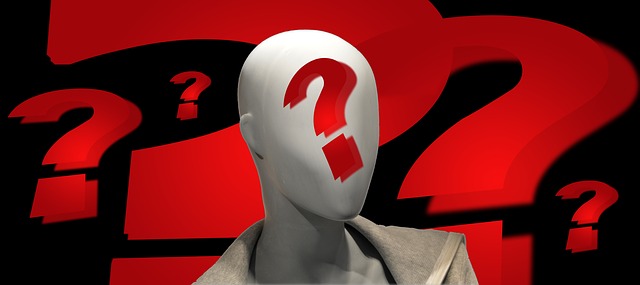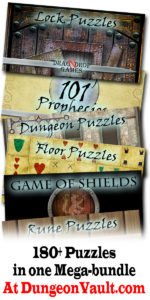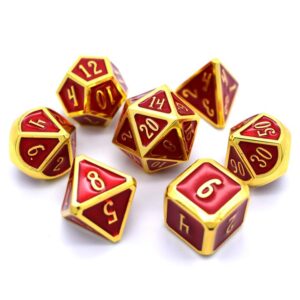Many players enjoy good D&D puzzles but they are hard to do well. This is because most dungeon master’s don’t know how to make puzzles and forget a few important parts about making any puzzle.
D&D puzzles are meant to be an intellectual challenge that has many options to be completed, are not too difficult, and serve a purpose.
There are many different types of puzzles but in order to avoid complete confusion we need to find that happy medium. Not too difficult, but not too easy in order to make a satisfying puzzle.
Puzzle difficulty
How many times have you made a puzzle that took forever to solve?
On the opposite end, how many D&D puzzles have you made that the party could not solve?
I have been in both situations and have through trial and error (sorry past players) found out how to properly run puzzles.
I have also found out when to properly put in a puzzle. Many dungeon masters just put in a puzzle because they want the players to solve it, but there are issues. If the puzzle doesn’t fit the theme then it is confusing. Not enough information could be given.
If we end up handing our players all the answers we sometimes have a player who instantly solves a supposedly difficult puzzle.
It is never satisfying to have a puzzle solved instantly, but it is worse when players cannot solve puzzles.
If a player solves the puzzle because they are good at puzzles and have been paying attention do not feel bad. These players are being rewarded for their attentiveness. It makes the player feel better about paying attention and your hard work is recognized.
If players just solve a puzzle because you ripped off a pop culture puzzle (I am lying, no he is lying) then you might have a right to feel bad.
But do not worry!
I will help you figure out the secrets to create a good puzzle.
I will also tell you the different types of puzzles so that you can design a proper puzzle for what you are trying to achieve.
So sit back, relax, and lets investigate problems vs puzzles first since these two concepts are confused.
Problems vs puzzles
When creating D&D puzzles some dungeon masters create problems instead of puzzles. This is fine, but it is important to realize what you are making so you can help your players solve the obstacle.
A problem is where there is no clear solution. A puzzle involves a definite way to solve the obstacle and progress.
You can design a problem puzzle if you wish. This involves crafting a puzzle and letting the players figure it out. Once they do something that sounds good you let them pass and they congratulate themselves.
This is a very lazy way to do puzzles but your players will not know so it is okay, right?
Depending on your answer to that question, you will or will not impliment the problem puzzle. I only recommend it for intuitive critically thinking veterans but every group is different.
A problem that you can present is making the players deal with a cave in. Players now have to progress further in the dungeon since they have triggered the trap, but they can find a way around the cave in.
A clearer example of a problem would be if the players come upon a broken bridge. The players can ignore some of these problems or find a solution to them.
I personally prefer problems to puzzles since puzzles have a defined way to solve them.
Puzzles if done well will not confuse players. You will give proper foreshadowing, environmental cues, and make it solvable.
Making a good puzzle is hard which is why I only use it a little bit to bar progression. Instead I use puzzles in addition to a situation in order to add mystery.
Character puzzles

In my current campaign I have introduced a crime lord. This crime lord gained some of the energies from an incomplete ritual and now has the time stop ability at will.
There are limitations to it, but discovering this ability will be a puzzle that the players will have to figure out. They will have to figure out and put the pieces together through research after encountering him.
In addition to this, they will have to figure out exactly how his ability works since there are some stipulations.
I have given them the ability to do so with contacts, spell research, and encountering him to figure out how the ability works.
This character puzzle adds a bit of fascination and mystery to the villain. Players do not know initially what will happen and have to figure out what is occurring through research.
You can add character puzzles in other ways.
A lord is able to run the town with an iron grip. How is he able to bend the guards to his will and make everyone follow his word? Is it fear, magic, connections?
You can have the players search for the answer and uncover the correct answers through diligence.
These are not traditional puzzles, but instead, something to make any villain seem a bit more interesting.
But you are interested in the typical D&D puzzles so let’s get into them now.
Content gating puzzles
“You enter a room and the there are 2 keys on the wall. You are also able to see 4 doors in the room. Each door is numbered and the keys are both numbered 5. What do you do?”
The players are not able to progress until they solve the puzzle.
This is a content gating puzzle.
D&D puzzles that block content kind of suck if done improperly and I highly, HIGHLY suggest that you do not use these puzzles if you are not very skilled with puzzles.
If the players do not understand what you wanted them to do then they will not be able to progress at all and the game will come to a standstill.
What is even worse is that when these puzzles are solved by players it has taken so long that they are almost always angry with the answer.
The answer to this puzzle was to use the keys on doors 2 and 3 since 2 and 3 make 5. Pretty simple solution since I knew what the answer was, but your players are not psychic.
Just think, what hints did I give? Would you have gotten this puzzle? The answer seems very simple but in reality it would stall a party for hours if no help was given.
Because of this, I cannot stress enough that you stay away from content gating puzzles until you are ready.
The steps below will help you make some good puzzles, but practice on making character puzzles and bonus puzzles.
Bonus puzzles
Bonus puzzles are the exact opposite of content gating puzzles.
A party does not need to complete the puzzle in order to progress, but they will still want to.
Bonus puzzles are a great way to introduce puzzles if you are still unsure of how to do puzzles and want to test your ideas out. If the party can’t figure out the puzzle, that is fine. They can still play the game and not be locked for hours trying to figure out what to do.
On the other hand, players may not try your bonus puzzles. We work hard to make our D&D puzzles and it sucks when they are not fully utilized. This is the biggest downside of bonus puzzles but I have some good news.
People need to know.
People need to know what is behind that door. They need to know what is in the chest. Everyone wants to know! This is why players will most of the time treat bonus puzzles as if they are content gating puzzles.
One benefit that you have is the ability to talk to your players. I know that most dungeon masters do not have always talk to their players, but you can in order to tell them that they do not have enough information to solve the puzzle.
This might not even be true but it works!
Let’s say your party is stumped and cannot figure out the puzzle. You have (you thought) given proper hints and crafted a well designed puzzle. If your players cannot find the answer tell them that they do not yet have all the pieces. Next just put some more clues in the world or area that they are exploring.
Now players can go back and solve the puzzle. This is an exciting event as long as the reward isn’t terrible.
But how should you help your players solve the puzzle?
Foreshadowing

There are a few ways that you can help players solve your D&D puzzles but the most preemptive way is to foreshadow.
If in one dungeon you give some icons on a piece of history, you can use that information later. Combine this with some enviornmental factors and bam! You have some foreshadowing that a puzzle is coming and how to solve it.
Some people criticize this method for giving the players the answer beforehand, but every puzzle should have an answer. You are just rewarding players who take notes and get immersed into your world. Isn’t that exactly what you want?
Foreshadowing can be vague at first and not make a lot of sense when it relates to the world and tells a story. Foreshadowing can also be directly related to the puzzle and not make sense in the moment but provide an ‘aha!’ moment for later.
Foreshadowing is also a way to give your players information BEFORE the puzzle is encountered. If this is done then you don’t have to give the players all of the information in the puzzle room.
A proper foreshadowing makes the players pay attention to the world around them. This makes them think and appreciate everything more, but how do you properly give the hints needed in order to solve a puzzle?
Giving proper hints
When players make puzzles they think that the players have every hint needed to solve the puzzle. The problem lies in the fact that you are technically right, but also very wrong.
Players are not able to read your mind. If they would then puzzles wouldn’t be a challenge anyway, but this means that they don’t know what you know. If you know that the key is supposed to be turned 3 times but your players don’t then there will be a problem.
When we as dungeon masters convey information there are times where we have to clarify things. In a puzzle situation you generally are not going to clarify every little thing and give them the answer.
The problem arises when you have not communicated what to do properly. When this happens players are at a loss and cannot solve the puzzle.
We are only human and this happens to everyone, even experienced dungeon masters. So how can we make players understand how to solve our D&D puzzles?
3 clue rule
This is a technique that has been around for a while. Everyone links it when they talk about teaching puzzles and I won’t be the exception.
If you are interested in reading the source material here it is, but I am going to summarize it for you.
First, minimize points of failure. If you are making the party succeed in 4 specific skill checks or fail, you have 4 points of failure. Low rolls happen and your puzzle can be destroyed from this. That is why I suggest that you do not make a puzzle’s success based on ANY skill checks.
If you want your players to solve something and don’t just want them to recall information from earlier you need to give clues. Hence the three clue rule from the Alexandrian.
“For any conclusion you want the PCs to make, include at least 3 clues.”
Players never make things go according to plan. They go in circles, zig zag through narrative and make dungeon master’s question the concept of sanity. Because of this, you should have multiple points where players can get the answer that they need.
Players will many times not find the correct answer. That is why you give them multiple opportunities. More clues just mean that they can make a better judgment. It isn’t that bad. What is bad is having your players unable to solve a puzzle because they didn’t get the proper clue or understand what the clue meant.
This can and will destroy D&D puzzles. That is why I highly suggest that you have multiple clues for your group at each point where they need to solve something in order to progress.
Puzzles are also hard to construct while keeping all of these steps in mind, so a useful tool are the puzzles at dungeon vault to help you out. They have images that I personally use to help illustrate puzzles, and I use them a lot when designing my puzzle. You might find our affiliate just as helpful as I have, so check them out and decide for yourself!
In order to have these clues make sense and not just be thrown in there we need to establish why a puzzle is there in the first place.
Why are there puzzles?

Many dungeons just throw puzzles for some reason into a dungeon and then expect that to be normal. Here is my question,
“WHY IS THAT NORMAL!?!?!?”
We have no recorded instances of a dungeon, prison, fortress, or anything in read life having puzzles in order for people to proceed. It makes no sense.
The good news is that you are crafting a D&D puzzle. These puzzles work in the D&D world because the world of D&D differs from ours. Here are a few reasons why it might exist.
Religion.
Religion is a great reason to have a puzzle. In D&D there are weird gods to knowledge, gods of secrets and more. Those gods have a great reason to have puzzles installed in their shrines, but other gods can have puzzles too.
Puzzles can be a religious right for followers. Every time the high priest accesses the inner chamber they must turn the sun dial appropriately at the proper time of day in order to show reverence.
This is one way to use puzzles in religion, but you get the point. You can also use puzzles for other reasons.
Thieves.
Thieves are very secretive in whatever they do. They are also mistrustful of each others. Lastly, thieves might have an ego. Why would you keep something safe in a lock when you know it can be picked? Why not keep it in a place where only you know how to get past?
Architects,
D&D has some crazy structures. There are also no shortage of crazy people, so why not have an architect demand for puzzles? This could be ego, but since others use puzzles an architect might want to show off. Whenever you do this, I highly suggest that there is an insignia or trademark near a trap.
This will be just like what artists do today with their works and make the party a little angry if they find another trap by J.J.
Lastly, we have
Villains.
Villains are an egotistical lot who can use puzzles for any of the reasons above. They also have to deal with henchmen. Why not weed out those who are inept by killing them? Even better yet, why not have the ‘adventurers’ deal with a puzzle when your henchmen come out and attack the players!
There is nothing like having your players solve a floating platform puzzle (or problem) and then have them be attacked by henchmen. Or you know, just shoot at them from afar so that melee people have to figure out the puzzle or be useless.
D&D puzzles for villains can be used for a ton of reasons other than just to hide treasure. I challenge you to think of fun creative ways why your puzzle exists. Once you do this, your puzzles will undoubtedly improve.
There are other reasons why puzzles can exist as well!
Convey world lore
D&D puzzles can convey a little bit about the world to players. In video games, they tell a narrative by having the player experience it. This is a bit more engaging than just watching a narrative so why don’t you do the same?
We used the example of hieroglyphics a little bit earlier in the article. You can use these drawings to help illustrate past events. Use the lore of the dungeon or world in order to solve a puzzle.
Make the whole game seem more alive by making the players interact with it!
This is much better than just telling the players the lore through some lazy exposition from high priest NPC Snoozey.
Convey messages
You can convey messages to your players through puzzles.
Puzzles are meant to be an intellectual exercise. It is possibly one of the few times that players think deeply. Players will be able to solve the puzzle if you have planted your clues well enough.
This means that players can also consider things beyond just which button to press. If you have a concept that is contrary to the world, like if gods are actually only aliens, you can convey this idea through puzzles.
Are these messages correct? They do not have to be. If a conspiracy nut has built a dungeon to tell ‘the truth’ then the players might be skeptical. If instead this is an ancient tomb before the gods came it might have credibility. Just make sure this is message is conveyed in the dungeon.
If players are not in an obvious conspiracy dungeon, this may make them question everything.
You can start by giving messages or puzzles that convey the idea that history is written by the victors. You then slowly plan information throught the dungeon that history is not as they know it.
Now near the very end after planing clues and doubts, the players solve a puzzle that essentially tells them that the gods are aliens. The gods are not all powerful, but instead came from somewhere else and rule over everyone.
You can add more to it like saying the gods locked up the actual good ones of their race and are slowly siphoning each mortal’s soul for energy. Whenever you want, you can use puzzles to shatter the player’s world view and make solving the puzzle, even if they know the answer, a tense and mind blowing experience.
Now that you know how to use D&D puzzles AND give clues well, let’s go over some creative D&D puzzle ideas.
Countdown puzzle
I am just going to point you here. Watch that short video. Do it!
Now that you have watched the video you know how to create a tone setting puzzle.
If the dungeon is going to be evil and tense, make a tense puzzle. If you don’t want your players to overthink things then make a countdown puzzle.
This is just something I wanted to show you quickly, but there are other types of puzzles to go over.
Escape rooms
Have you ever been into an escape room? Essentially you are in a room and have to solve how to get out before the time runs out. You fail, you just fail.
D&D puzzles are a bit more deadly. Instead of failing make it you fail, you die!
This is pretty easy to do. Make gas start to come into the room, water flood the room, anything to add some tension.
Unlike normal escape rooms I suggest that you have some backup clues. A normal puzzle room just has failure but this is a potential TPK! No one wants to kill the whole party since the players couldn’t read your mind so add a few extra clues.
I suggest to use these traps sparingly. If used too much the tension is lost. The same goes for maze traps.
Mazes

Did you know that maze as a spell banishes a creature to wander a maze? Doesn’t that sound sort of like a puzzle? If the creature can find the center or exit, then it is a puzzle.
If you lay the proper clues and let your players find their way out this can be an excellent puzzle.
Imagine that the player starts to mark their passage, find a change in hedge color to indicate what direction they are going in, notes, whatever.
There is an infinite number of ways to give players clues in a maze. If you want to use mazes as a puzzle you most definitely can and should.
Now onto our last D&D puzzle.
Trap puzzles
I already wrote an article on traps that covers trap puzzles a bit. I would highly suggest that you read it and come back here.
Now that you have read the trap puzzles section in the article we can continue.
Trap puzzles should follow all the previous clues, lore, and everything else that we have mentioned. The only real difference is that trap puzzles can have a negative outcome.
Conclusion
D&D puzzles are a blast to have in your game if done right and frustrating if done wrong. With these tips above you should be able to give your party proper clues. Then make an interesting puzzle that they can solve.
I also have given you a few puzzle ideas, but always keep in mind why a puzzle exists. There are a plethora of reasons why a puzzle should exist. Once you have your reason it will make creating unique and interesting puzzles much easier.
D&D Puzzles can be a challenge, but I hope that you have learned how to craft amazing puzzles for your group.
Lastly, if you want to support the blog you can get stuff for it! We offer The Cube as a custom add on to your game and our affiliates. At Dice Envy they offer well made and cool looking dice and Dungeon Vault helps to help give you extra tools to make your campaign even better! I prefer to use my dice from Dice Evy since they are actually balanced and love to use the tools from Dungeon Vault.
This has been Wizo and keep rolling!






You example in the content gating puzzle section doesn’t work. You answer is that the key with the number 5 works for door 2 and 3 since that adds up to 5, but so does 4 and 1.
You are correct. You can use 4 and 1 to solve the puzzle as well, but you still need to have the players figure it out. That was the real point of the content gate. Players have to solve the puzzle in order to progress.
But yes, you are correct that there can multiple ways to solve content gating puzzles.